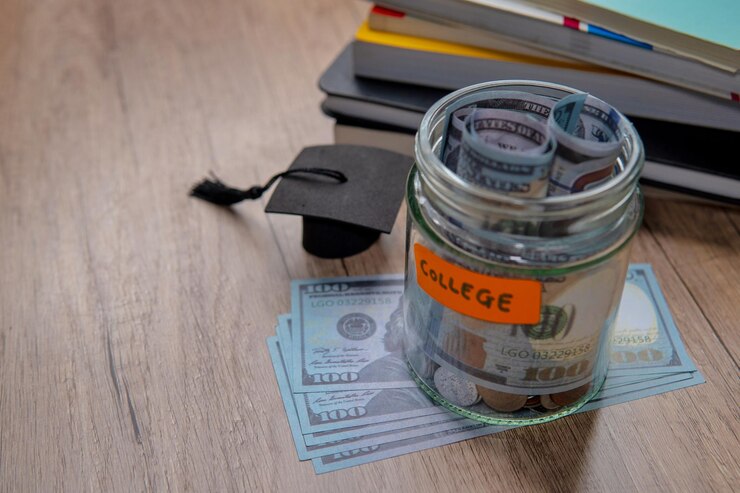Student loans are often seen as the “golden ticket” to college, but they can also feel like a heavy backpack you didn’t realize you were carrying. If you’re thinking about borrowing for college—or already have—this guide is for you. Let’s break down student loans in a way that’s easy to understand, helpful, and maybe even a little eye-opening.
What Are Student Loans
Student loans are money borrowed to help pay for college or other educational expenses. Just like any loan, you’ll need to pay back the money—with interest. Think of it like borrowing a pencil from a friend… but instead of giving back just the pencil, you owe them two!
Why Do People Take Out Student Loans?
Not everyone has thousands of dollars lying around to cover tuition, books, housing, and more. That’s where student loans come in. They make higher education possible for millions of people every year. It’s a way to invest in your future—but it comes with responsibilities.
Types of Student Loans
There are two main types:
- Federal Student Loans – Offered by the government, usually with lower interest and more flexible repayment options.
- Private Student Loans – Offered by banks or credit unions. These often have higher interest rates and fewer benefits.
Federal vs. Private Loans
Federal loans are usually the better deal. They come with perks like:
- Fixed interest rates
- Income-driven repayment plans
- Possibility of forgiveness programs
Private loans, on the other hand, are based on credit scores and may not have as much flexibility. Always try federal loans first.
How to Apply for Student Loans
To get federal student loans, fill out the FAFSA (Free Application for Federal Student Aid). It’s like the golden key to financial aid. For private loans, you’ll need to apply directly with a lender.
Understanding Interest Rates
Interest is the cost of borrowing money. Federal loans usually have fixed rates, meaning they stay the same. Private loans might have variable rates, which can change over time—sometimes not in your favor.
Think of it as a slow leak in a bucket. Even if you’re not using more water (or money), the level is still going down because of the leak (interest).
Loan Repayment Options
There’s no one-size-fits-all here. Some options include:
- Standard repayment – Pay the same amount every month for 10 years.
- Graduated repayment – Start small, then payments increase over time.
- Income-driven repayment – Payments depend on your income.
Grace Periods: What Are They?
Most federal loans give you a six-month grace period after you graduate before you have to start paying. It’s meant to give you time to find a job. Use it wisely—interest may still build during this time.
What Happens If You Can’t Pay?
Life happens. If you’re struggling, don’t ignore your loans. Options include:
- Deferment or forbearance – Temporarily pause payments.
- Income-based plans – Lower payments based on what you earn.
Missing payments can hurt your credit score and lead to bigger problems down the line.
Loan Forgiveness: Is It Real?
Yes, in some cases. Programs like Public Service Loan Forgiveness (PSLF) can forgive your federal loans if you work in qualifying jobs and make consistent payments. It’s not a magical wipe-away button, but it can work if you follow the rules.
Tips for Managing Student Debt
- Budget early – Know what you’ll owe.
- Don’t borrow more than you need.
- Start paying interest early if you can.
- Keep track of all your loans in one place.
How Much Should You Borrow?
A good rule? Don’t borrow more than your expected first-year salary after graduation. If you’re studying to become a teacher, don’t borrow like you’re going to be a lawyer.
Scholarships and Grants vs. Loan
Grants and scholarships = free money. Loans = pay it back (plus interest). Always apply for as many scholarships and grants as possible before turning to loans. It’s like choosing a gift over a credit card.
The Emotional Side of Student Debt
It’s not just numbers—it’s stress, pressure, and long-term planning. Many people feel overwhelmed by student loans. That’s why it’s so important to stay informed and seek help when needed. You’re not alone.
Final Thoughts on Student Loans
Student loans can open doors, but they can also become burdens if you’re not careful. Know your options, borrow smart, and always have a plan. Think of student loans as a tool. Used wisely, they can help build your future.
FAQs
1. What’s the difference between subsidized and unsubsidized student loans?
Subsidized loans don’t charge interest while you’re in school. Unsubsidized loans do. It’s like getting a “pause” on your interest with subsidized loans.
2. Can student loans be forgiven completely?
Yes, but only in specific situations like working in public service or teaching in high-need areas. It takes time and effort.
3. Do I have to start paying loans right after graduation?
Not immediately. Most federal loans give you a 6-month grace period before repayment begins.
4. Can I pay off my student loans early?
Absolutely! There’s no penalty for paying early. In fact, it can save you a lot in interest.
5. What happens if I default on my student loans?
Defaulting can harm your credit, lead to wage garnishment, and make you ineligible for more aid. Always talk to your loan servicer if you’re struggling.










